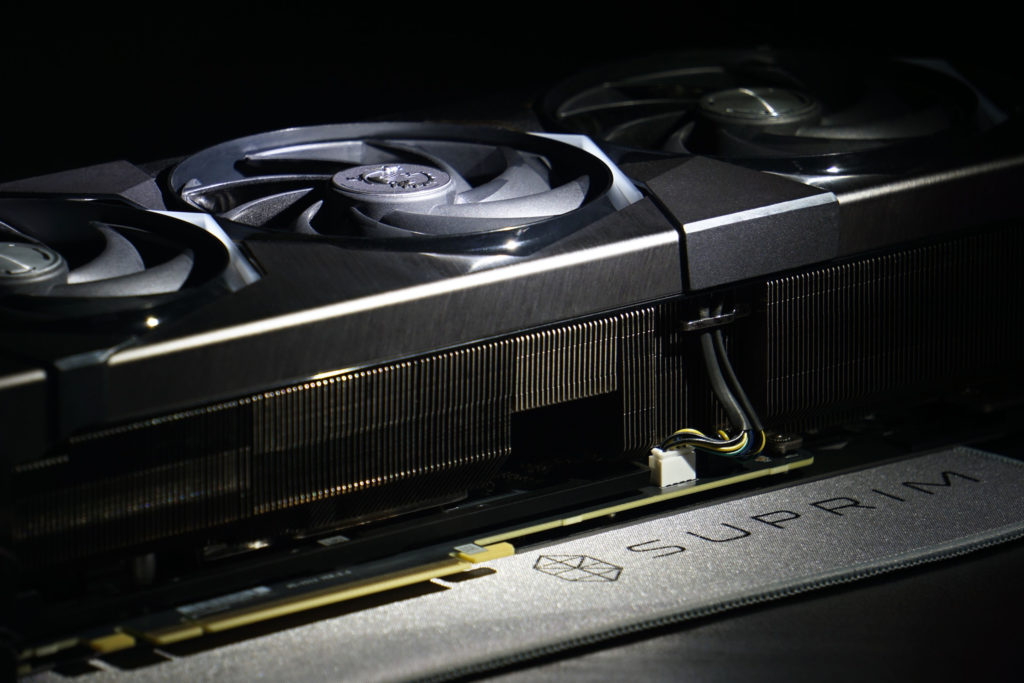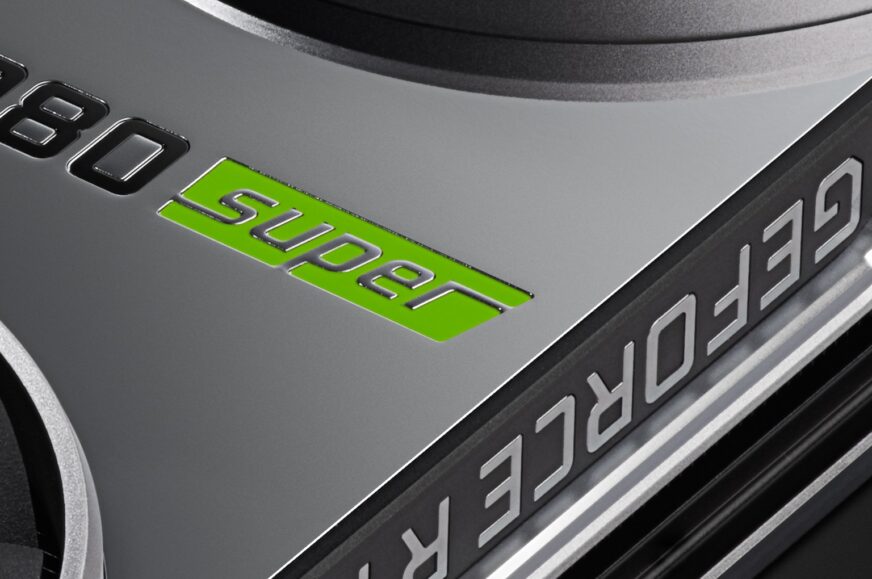GeForce RTX 4000 Super models will each be differentiated in a different way
35W versions of Intel’s Raptor Lake processors weren’t the only thing about which we got leaked information over the holidays. We now also know the complete specs of the refresh SKUs of Nvidia’s Ada Lovelace gaming GPUs, the GeForce RTX 4080 Super, RTX 4070 Super and RTX 4070 Ti Super graphics cards. It looks like they could improve the price-performance ratio quite nicely, assuming Nvidia doesn’t make them too expensive, that is.
The specifications of these three models (which seem to be the whole RTX 4000 Super lineup for now) have been published by VideoCardz. This should be information coming from the card manufacturers, who, according to VideoCardz, have already received confirmed final clock speeds and other specifications from Nvidia.
GeForce RTX 4080 Super
The fastest Super model is the GeForce RTX 4080 Super. It will however slot under the original top-end GeForce RTX 4090 model, which will keep the position of Nvidia’s fastest gaming card even after the Super refresh. The RTX 4080 Super will use the AD103-400 chip with 10 240 shaders (80 SM, thus also 80 RT cores, 320 tensor cores). It’s a fully enabled version of the silicon which has been used in a slightly cut form in the RTX 4080, until now. This means an increase in the number of shaders by 512 (+5.3%), but Nvidia is increasing the clock speeds at the same time, namely the base to 2295 MHz (+90 MHz / +4.0%) and the boost to 2550 MHz (+45 MHz / +1.8%).
On the other hand, the TDP of the card is not said to increase, it will still be set at 320 W (note that this may not be true for non-reference OC cards). The GDDR6X type memory will remain at 16 GB capacity and on a 256-bit bus. Its bandwidth will increase to 736 GB/s (+2.7%) thanks to the (effective) clock speed being increased from 22.4GHz to 23.0GHz.
Optimistically, if we go by the combination of the increase in the number of units and the base clock speed, the performance of the card could go up by maybe 10%, but we could probably see a lower increases too, given that the TDP doesn’t change and the memory bandwidth doesn’t change either (which could be a limiting factor especially at the highest resolutions). The results will probably vary from game to game depending on the nature of the workload.

GeForce RTX 4070 Ti Super
The second model in the series will be a slightly bigger upgrade over the base GeForce RTX 4070 Ti. In this case, we have a switch from the full version of the smaller AD104-400 die to a cut-down version of the higher-tier AD103-275 chip. The card will gain 768 shaders (+10%) to a total of 8448 (66 SMs, 66 RT cores, 264 tensor cores). Additionally, its base clock speed will increase to 2340 MHz (1.3% / +30 MHz), but without any change in boost (which stays the same at 2610 MHz).
The AD103 has a 256-bit memory bus as the major advantage. The clock speed hasn’t changed (still GDDR6X at 21.0GHz effective speed), but against the RTX 4070 Ti’s 192-bit bus, this means an increase in bandwidth by a third to 672GB/s. And, of course, capacity goes up the same way – from 12GB to 16GB. What, on the other hand, does not change, is the TDP again – for reference cards it is supposed to be 285 W.
So we can expect to see a raw compute performance going up by more than 10% for this card as well, but again that is unless the limitation of an unchanged TDP comes into play. The card does have a massive increase in memory bandwidth, though, so there is conversely also the potential for performance to improve even more than 10% in some situations, such where the RTX 4070 Ti had memory as its main bottleneck (either in bandwidth or capacity). This is something most likely to happen at high resolutions which is where RTX 4070 Ti Super could see the best gains.
So this mid-range card could arguably be a bigger attraction in the Super lineup than the RTX 4080 Super. Though that will all depend on price, which is ultimately the main thing that decides whether something is a good or a bad deal.

GeForce RTX 4070 Super
The last model, unlike the Ti Super, did not get tany upgrade to a bigger chip. But Nvidia will enable more of the currently used AD104 die’s units (AD104-350 variant is going to be used). There will be 7168 active shaders (56 SMs, 56 RT cores, 224 tensor cores). Note that RTX 4070 was using a heavily cut down chip in the non-Super version and ironically the RTX 4070 Super will get the biggest spec boost of all three cards – there’s 1280 shaders (+ 21.7%) getting newly enabled on top of the original RTX 4070 configuration. On top of that, the base clock speed will grow by 3.1% (+ 60 MHz) to 1980 MHz, even though the boost will remain the same: 2475 MHz.
For this card, Nvidia will also increase the TDP (to 220 W compared to the 200 W of the RTX 4070 – which is nothing to be sad about). However, there’s no change to the memory bandwidth. The AD104 can’t have wider bus than 192 bits, which gives the card 12GB of GDDR6X memory. The effective clock speed has remained at 21.0 GHz, yielding 504 GB/s. However, the RTX 4070 Ti, which is a notch higher SKU, is also depending on this exact same bandwidth, so perhaps it should still be sufficient for RTX 4070 Super too.
The GeForce RTX 4070 Super therefore also looks like a card that could offer a very interesting performance boost (and also be much more attractive addition than the RTX 4080 Super). Thanks to the number of units and the clock speed it could theoretically be up to 25% better than RTX 4070 in some games, but again that’s on the condition that it doesn’t become capped by the TDP, which has only been bumped up by 10%. And this improvement in turn will probably be seen mainly in lower resolutions. In higher resolution, the unchanged memory bandwidth (and capacity) may become a bottleneck, so the 25% improvement may not happen in them. While the RTX 4070 Ti Super gains upside for higher resolution, the RTX 4070 Super is a total opposite, with potential advantages mainly in the lower ones.
It should be noted that the reality may deviate quite a bit from the theoretical “calculations” of possible changes in performance that we have provided for illustration, for various reasons. So consider these performance guesses to be only a preliminary outlining of the possible. Only independent reviews (ideally several of them) after the release will tell you how good or bad these graphics cards really are.
Release this month, no word on prices yet
As a reminder, the alleged dates on which Nvidia plans to release these cards have already been leaked even before the specifications arrived. The three Super graphics cards are supposedly going to be announced during CES next week. The unveiling could be as early as Jan. 8, after which the cards should gradually be physically released in stores on Jan. 17 (RTX 4070 Super), Jan. 24 (RTX 4070 Ti Super) and Jan. 31 (RTX 4080 Super).
What remains to be seen are the prices. If Nvidia kept the prices of the Super models the same as their predecessors (so that the RTX 4070 Super, for example, would cost the same as the RTX 4070 today, with the RTX 4070 moving lower), it would improve the price-performance ratio nicely, much like the “Super” refresh did in the RTX 2000 (Turing) generation. But the prices may not stay the same and there is no information about them yet. It’s very well possible that Nvidia will wait with finalizing the prices till the last moment, until shortly before the CES presentation happens on Monday.
Sources: VideoCardz
English translation and edit by Jozef Dudáš
⠀








